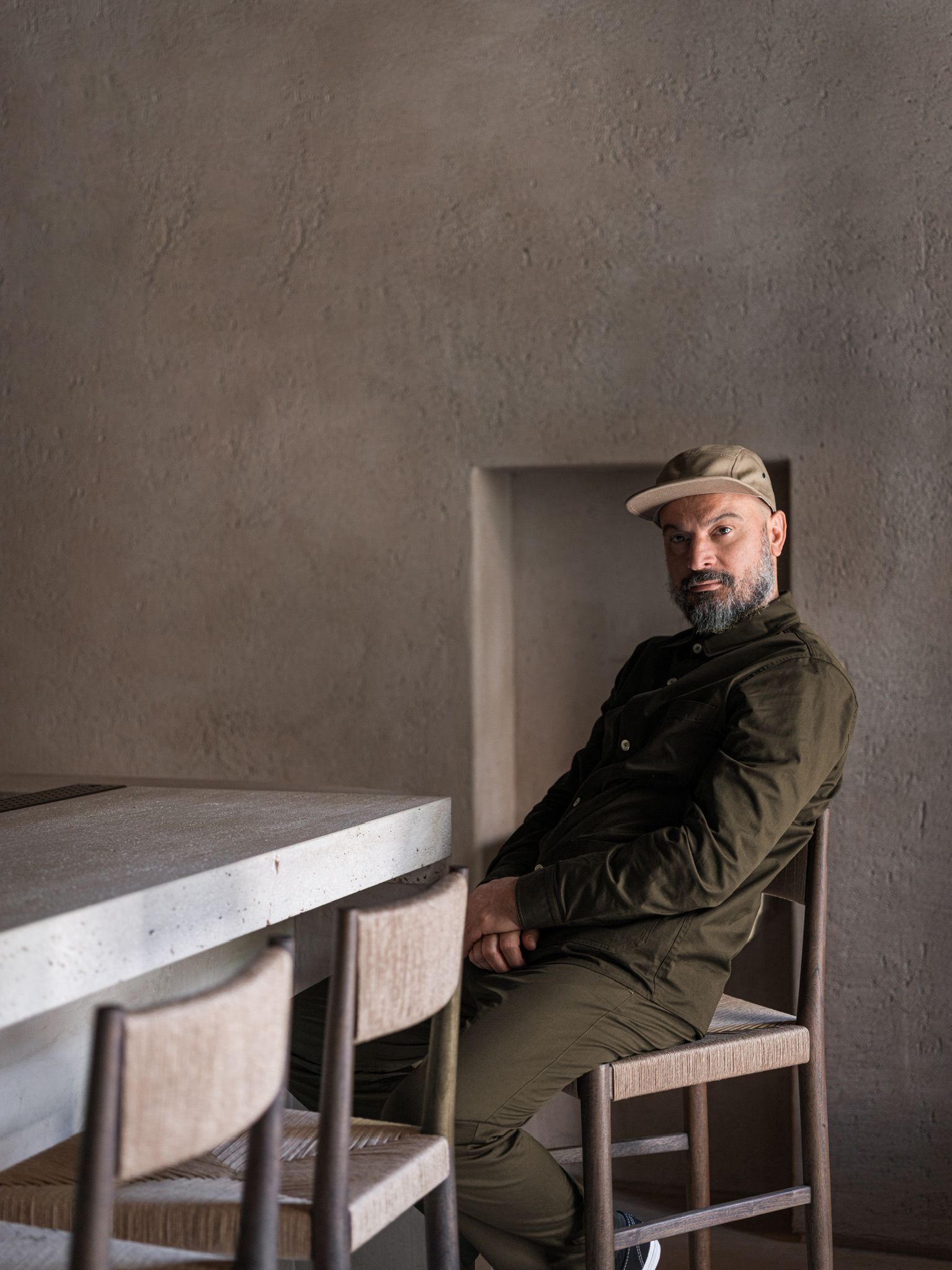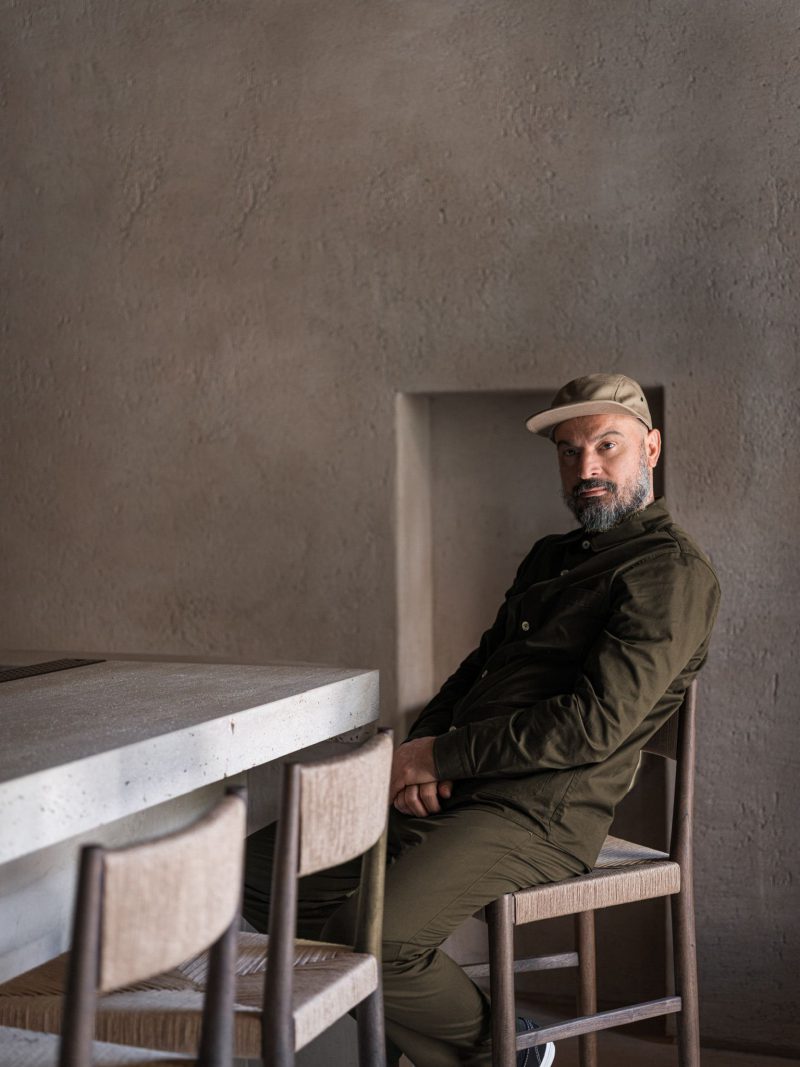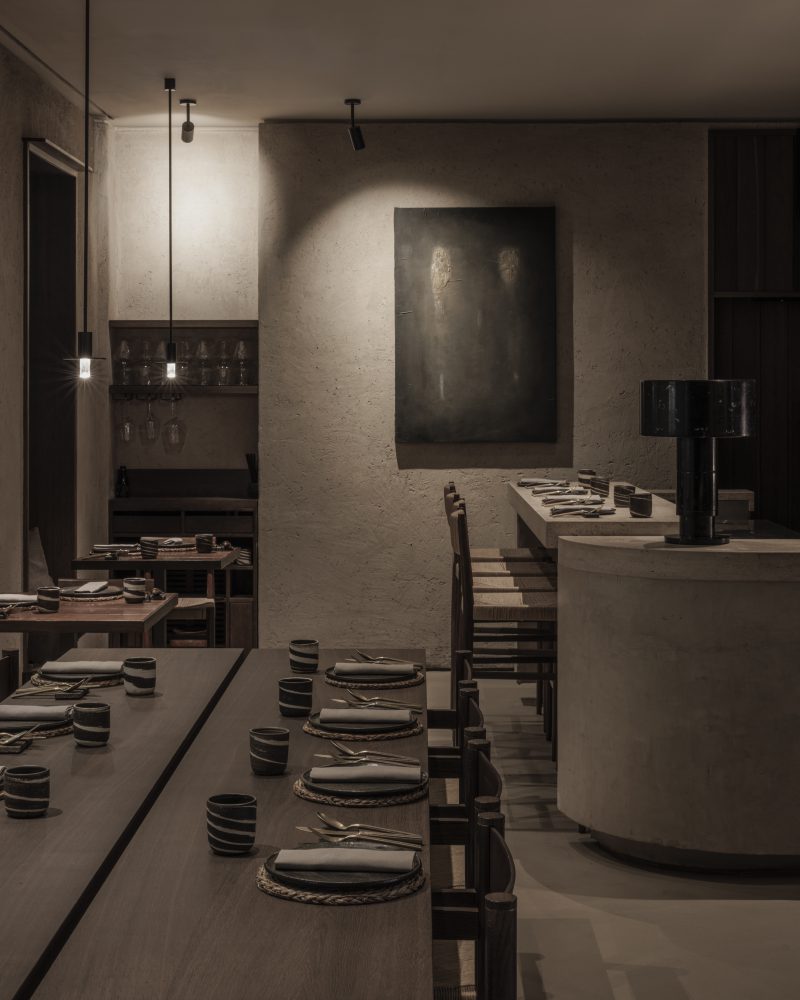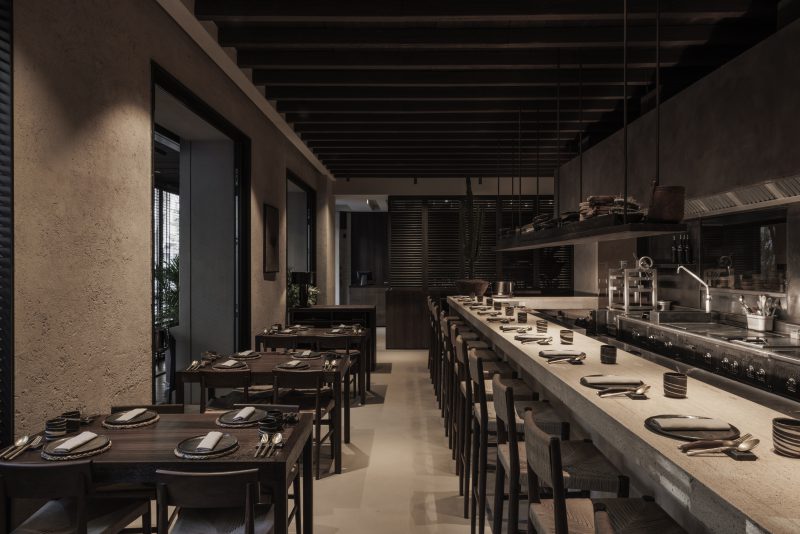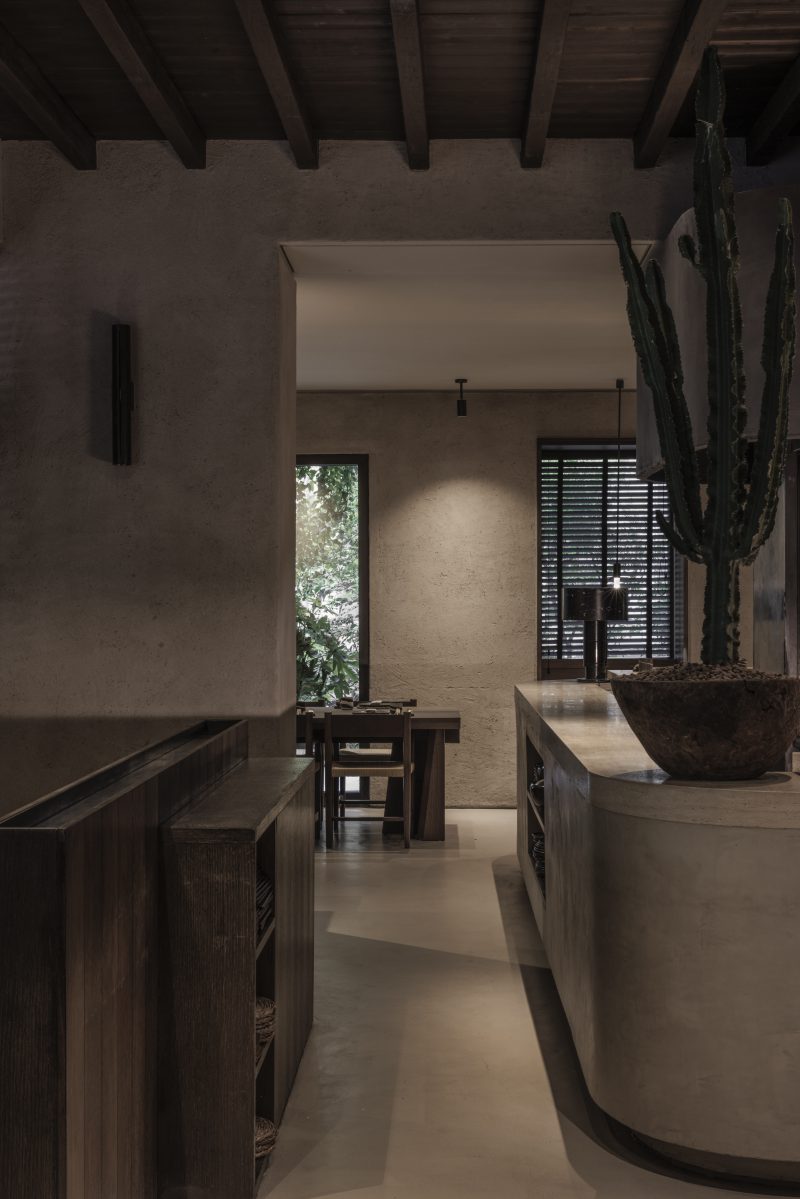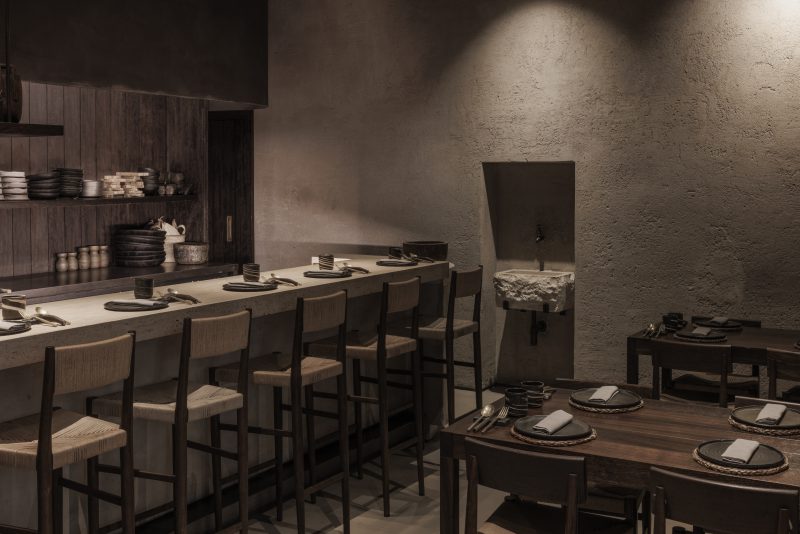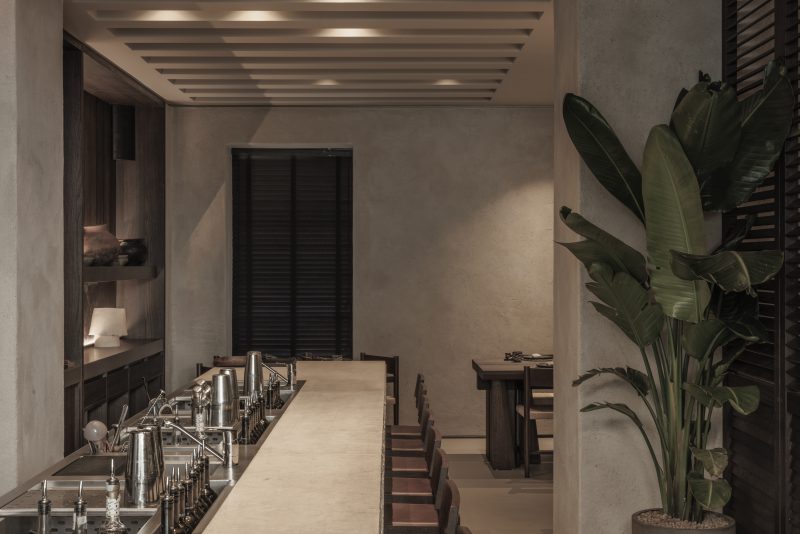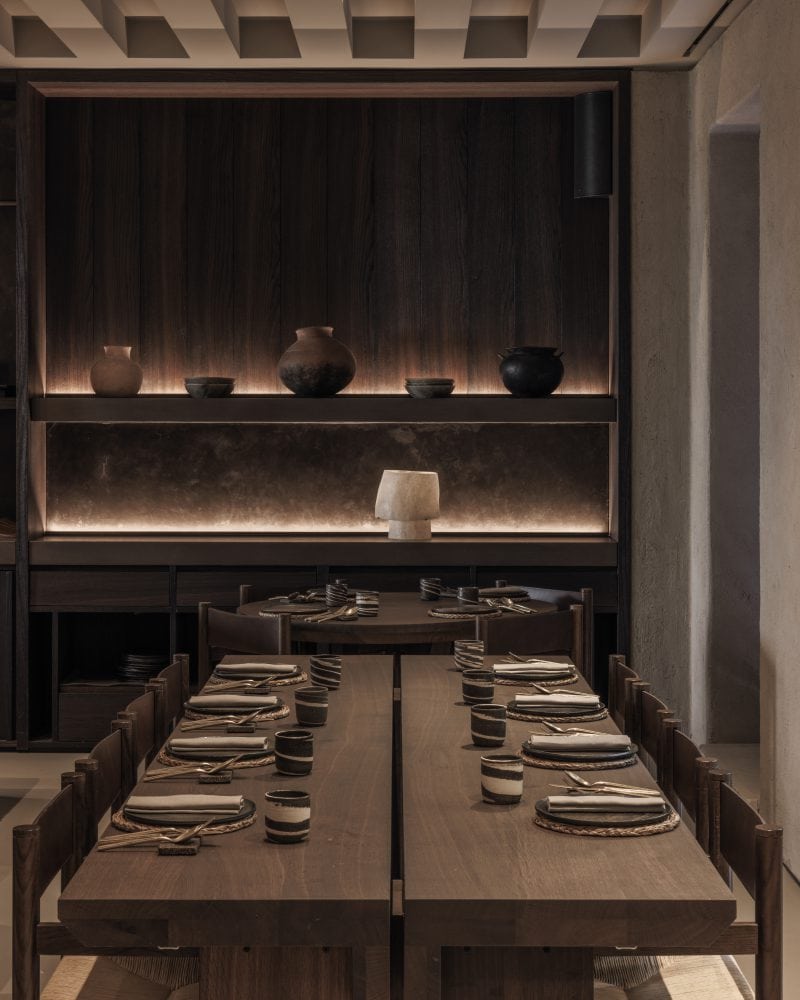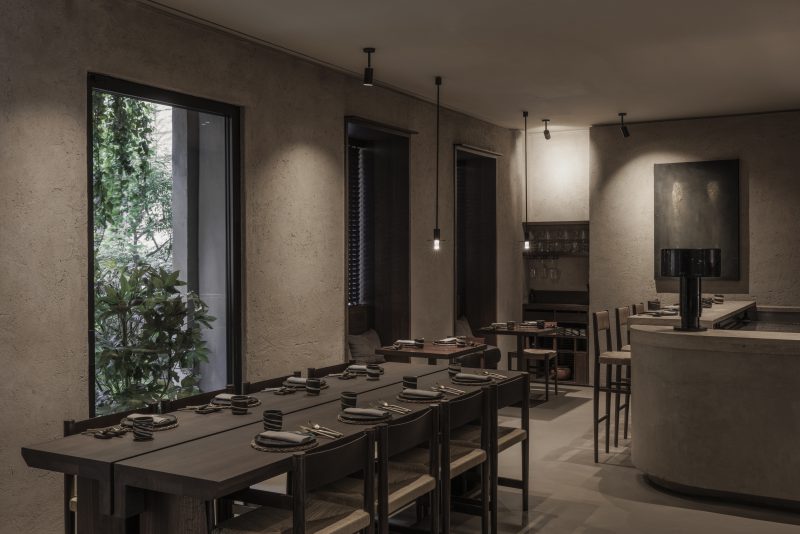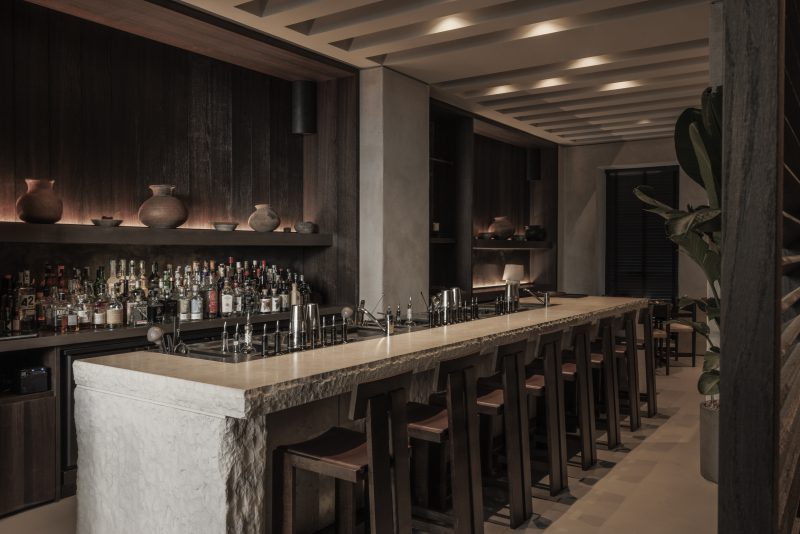YAPA now clarifies its operational framework: a circular, plant-forward kitchen where the liquid realm stands on equal footing with the edible. The new Cocktail Bar formalizes this parity through an integrated system of extractions, ferments, clarifications, botanical infusions, and low-waste processing. The model hinges on by-product valorization: trimmings, stocks, and surplus move through a controlled pipeline from bar to kitchen (and back), measured by yield and impact. YAPAS (eight counter seats) serve as a live test bench: fast sequences, clean raw materials, a short, seasonal menurevised quarterly, plus a market-driven “Yapa of the day.” Pairing is non-ornamental: kitchen and mixology operate in parallel on shared flavor matrices (acid/savory/umami/bitter), tuning texture, temperature, and length. Less theatre, more process engineering: service layout, cadence, and functional storytelling that clarifies the technique instead of dressing it up.
This vision stems from twenty years of research by Matteo Pancetti, founder and chef-owner of YAPA, whom we interviewed to unpack approach, protocols, and future directions. Alongside him, Matias Sarli (80–20ml) has shaped the project’s liquid architecture.
RITAMORENA ZOTTI: How did YAPA come to life, and what is the meaning behind its name?
At YAPA, that “something extra” is the chance to explore the world without leaving the city. It’s a gastronomic passport, journey through cultures and traditions, where every dish is an open door to another land, and every bite tells a story through the universal language of food.
RZ: Why introduce the Cocktail Bar now, and what does it add to the YAPA experience?
RZ: How did you work with Matias Sarli to align cocktails and cuisine? Can you share one successful pairing?
At the time, the concept of mixology was nowhere near the level of research, sophistication, and ingredient quality we see today. And yet, even then, it was clear to me that Matias was thinking 10–15 years ahead. I knew he would become a key figure in the radical transformation of the mixology world; and that’s exactly what happened. Looking back at those early days, we were young and full of dreams but already shared a common vision: to create an experiential concept where cuisine and cocktails could truly coexist. Today, I feelwe’ve achieved that vision with Yapa. It would be far too limiting to describe our collaboration as just a series of pairings. Over the years, we’ve come to understand each other deeply. For quite some time now, every dish I have created in the kitchen is shaped with Matias’ creativity behind the bar in mind; and vice versa. Every ingredient featured on the menu is regularly reinterpreted by Matias, as we continuously strive to craft a unified sensory journey that enhances the overall gastronomic experience.
RZ: YAPAS at the counter: what criteria guide seasonality and timing? A dish that best represents them.
To me, this is the ultimate freedom of expression, guided only by the joyful constraint of seasonal produce.
RZ: Ingredient ethics: how does it translate into mixology (spirits, botanicals, waste management)? What is non-negotiable?
Matias often incorporates kitchen by-products and trimmings into his infusions and cocktails; ingredients that are also reflected in the culinary offer. One example is the jalapeño used in the Mariacci cocktail, or the kimchi featured in our twist on the classic Americano; but there are many others. What remains non-negotiable is our dedication to continuous research and innovation. We’re constantly exploring new ingredients, spirits and botanicals, in order to stay at the forefront of flavor discovery.
RZ: Design and atmosphere: how do the eight bar seats shape service and flavor perception?
In terms of spatial perception, our goal was to create a sense of continuity between two distinct yet deeply connected experiences; unified by flavor and intention. We like to think of the Yapas offering, limited to these eight seats, as a kind of prelude to what Yapa truly represents: a more immersive, layered, and experiential journey. It acts as a preview, an introduction to a broader narrative.
The service at the new cocktail bar section fully embodies our belief that the interaction between the person crafting a dish or a drink and the one enjoying it should be direct and personal. To us, a complete experience happens when there’s eye contact, a shared moment, and a story being told; something we’ve always championed at the main counter in front of the open kitchen.
In my view, creativity cannot be fully expressed unless it is also properly communicated. Storytelling is an essential part of what makes the experience whole.
RZ: Wines and cocktails: how do they dialogue with Alfonso Bonvini’s selection? What’s next for YAPA (collaborations, pop-ups, October press dinner)?
This involves redefining the dialogue between the cellar, the bar, and the kitchen. Historically, we’ve always enjoyed balancing our wine selection between renowned labels and more niche products that are often less accessible in the market.
Given the natural synergy between Yapa’s cocktail offer and its cuisine, our short-term goal is to highlight a more curated wine list, in a smaller size, with a strong focus on lesser-known labels. These will be carefully selected to complement our seasonally driven culinary offering. At Yapa, we’re driven by a deep desire to explore, collaborate, and create experiences that go beyond the boundaries of a traditional restaurant. Over the years, we’ve brought our culinary vision to life through a wide range of external events, such as Vocla during Milan Design Week 2025, and we’re committed to continuingthis path. In fact, one of our goals in the near future is to bring once again Yapa’s experience outside the walls of our Milan restaurant once again. Nothing is yet defined, but we are currently exploring different opportunities. A new initiative we’re developing is a series of recurring, curated dinners designed to engage our network of opinion leaders from various industries. These gatherings aim to spark new creative connections and build a community that sees Yapa as a place of meaningful encounters and inspiration. We firmly believe that Yapa is, and always will be, a space where each person can interpret their own journey. We’re not here to define it; we’re simply here to offer a spark of inspiration.
